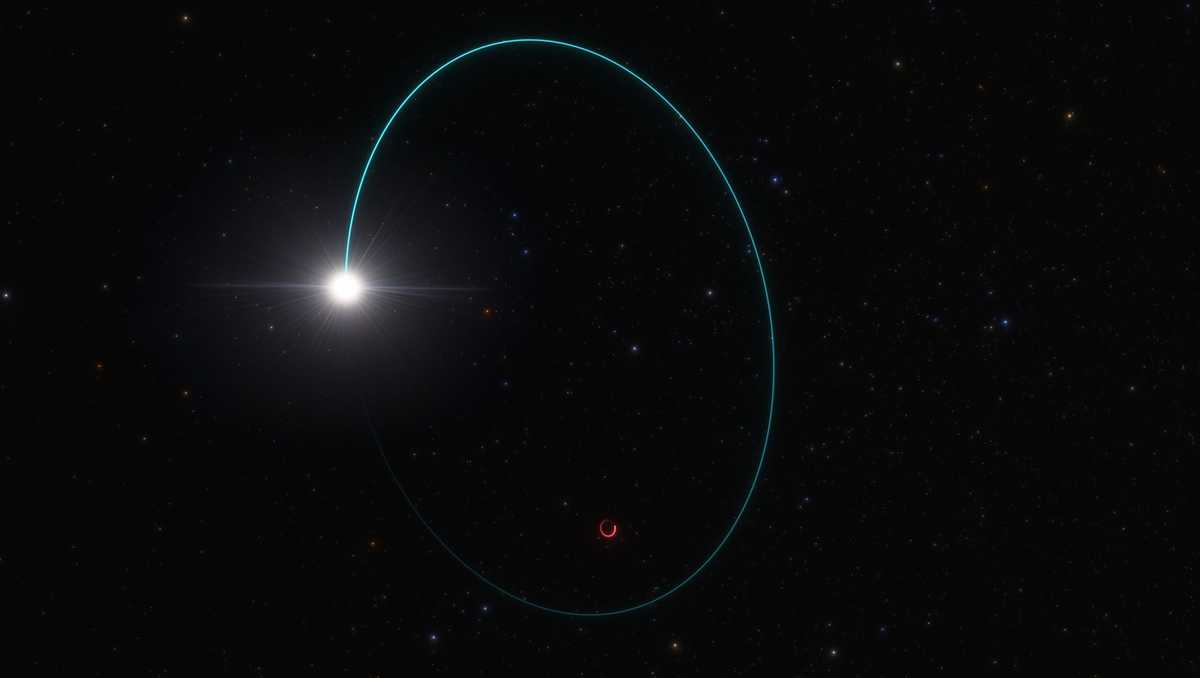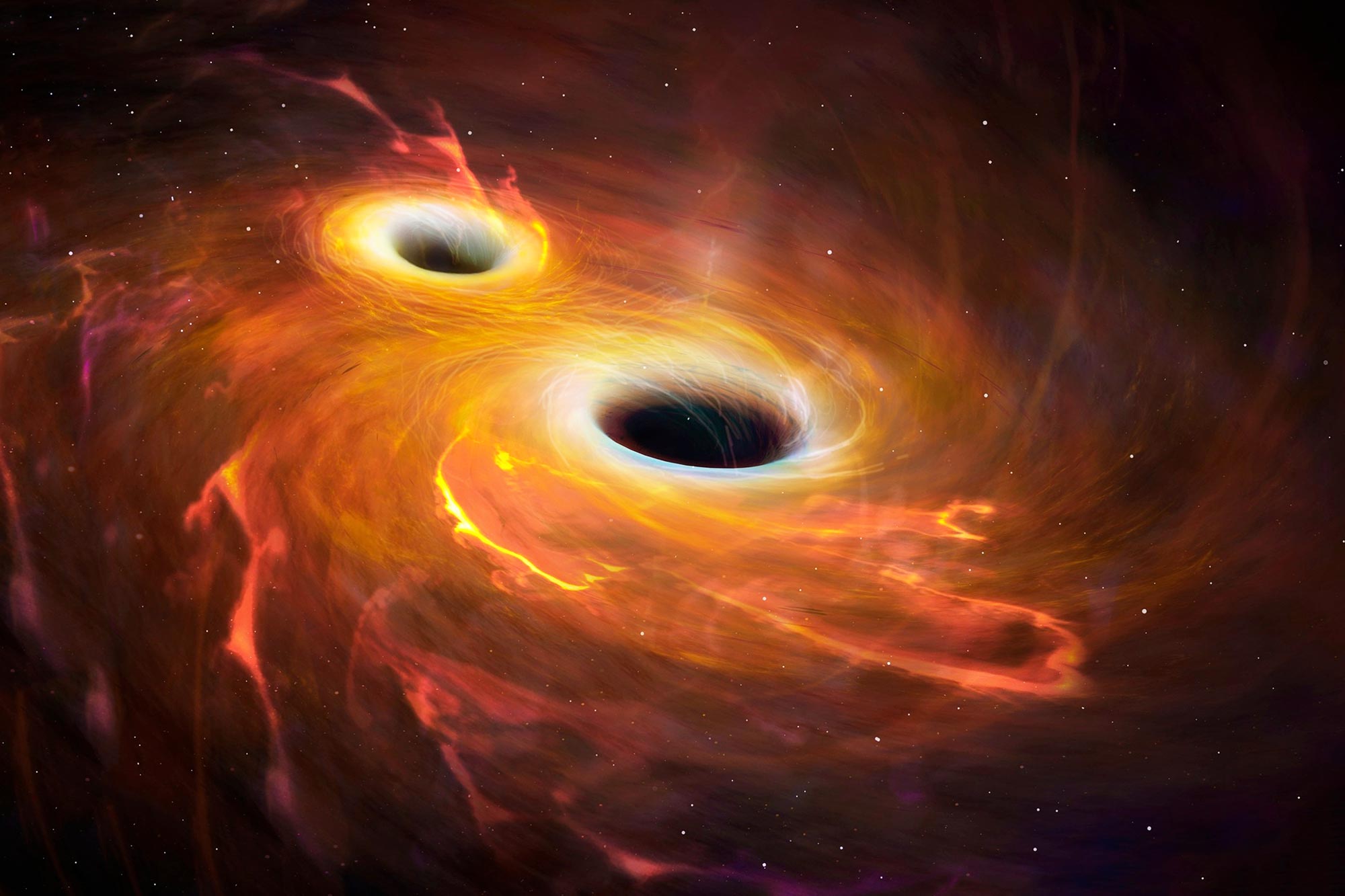Рентгеновская обсерватория НАСА Чандра обнаружила две пары сверхмассивных черных дыр в циклах столкновений в карликовых галактиках, что стало первым свидетельством такого неизбежного столкновения. Это открытие дает важную информацию о росте черных дыр в ранней Вселенной.
- Milky Way, likely formed larger galaxies through collisions in the early Universe.
- These newly-discovered merging dwarf galaxies can be used as analogs for more distant ones that are too faint to observe.
- The dwarf galaxies are on collision courses and are found in the galaxy clusters Abell 133 and Abell 1758S.

Evidence for two pairs of supermassive black holes in dwarf galaxies on collision courses has been found with Chandra. The two pairs are shown in X-rays from Chandra and optical light from the Canada-France-Hawaii telescope. The merger on the left is in a late stage and was given the single name of Mirabilis. The other merger is in the early stages and the two dwarf galaxies are named Elstir (bottom) and Vinteuil (top). Astronomers think that dwarf galaxies – those about 20 times less massive than the Milky Way – grow through mergers with others. This is an important process for galaxy growth in the early Universe and this discovery provides examples for scientists to study in greater detail. Credit: X-ray: NASA/CXC/Univ. of Alabama/M. Micic et al.; Optical: International Gemini Observatory/NOIRLab/NSF/AURA
A new study using NASA’s Chandra X-ray Observatory has tracked two pairs of supermassive black holes in dwarf galaxies on collision courses. This is the first evidence for such an impending encounter, providing scientists with important information about the growth of black holes in the early Universe.
By definition, dwarf galaxies contain stars with a total mass less than 3 billion Suns — or about 20 times less than the Milky Way. Astronomers have long suspected that dwarf galaxies merge, particularly in the relatively early Universe, in order to grow into the larger galaxies seen today. However, current technology cannot observe the first generation of dwarf galaxy mergers because they are extraordinarily faint at their great distances. Another tactic — looking for dwarf galaxy mergers closer by — had not been successful to date.
Новое исследование преодолело эти проблемы путем систематического сканирования глубоких рентгеновских наблюдений Чандры и сравнения их с инфракрасными данными, полученными с помощью Wide Infrared Survey Explorer (WISE) НАСА, и оптическими данными канадского, французского и гавайского телескопа (CFHT).
Чандра был особенно ценен в этом исследовании, потому что материал, окружающий черные дыры, может нагреваться до миллионов градусов, испуская большое количество рентгеновских лучей. Команда искала пары ярких источников рентгеновского излучения в сталкивающихся карликовых галактиках как свидетельство существования двух черных дыр и обнаружила два примера.

Доказательства существования пары сверхмассивных черных дыр были обнаружены в карликовых галактиках в циклах столкновений с Чандрой. Пара видна в рентгеновских лучах от Чандры и в оптическом свете телескопа Канада-Франция-Гавайи. Слияние слева находится на поздней стадии и получило индивидуальное название Mirabilis. Другое слияние находится на ранней стадии, и две карликовые галактики были названы Эльстир (внизу) и Вентейль (вверху). Астрономы считают, что карликовые галактики — те, что в 20 раз меньше Млечного Пути — растут за счет слияния с другими. Это важный процесс роста галактик в ранней Вселенной, и это открытие дает ученым примеры для более подробного изучения. Авторы и права: Рентгеновские лучи: NASA/CXC/Univ. Алабама / м. Микич и др.; Оптика: Международная обсерватория Близнецов/NOIRLab/NSF/AURA
Одна пара находится в скоплении галактик Abell 133, расположенном в 760 миллионах световых лет от Земли, что видно на составном изображении слева. Рентгеновские данные Chandra выделены розовым цветом, а оптические данные CFHT — синим. Эта пара карликовых галактик, по-видимому, находится на поздних стадиях слияния, демонстрируя длинные хвосты, вызванные приливными эффектами от столкновения. Авторы нового исследования назвали его Mirabilis после того, как он оказался на грани исчезновения.[{» attribute=»»>species of hummingbird known for their exceptionally long tails. Only one name was chosen because the merger of two galaxies into one is almost complete. The two Chandra sources show X-rays from material around the black holes in each galaxy.

X-ray and optical composite of Mirabilis. Credit: X-ray: NASA/CXC/Univ. of Alabama/M. Micic et al.; Optical: International Gemini Observatory/NOIRLab/NSF/AURA
The other pair was discovered in Abell 1758S, a galaxy cluster about 3.2 billion light-years away. The composite image from Chandra and CFHT is on the right, using the same colors as for Mirabilis. The researchers nicknamed the merging dwarf galaxies “Elstir” and “Vinteuil,” after fictional artists from Marcel Proust’s “In Search of Lost Time”. Vinteuil is the galaxy on the top and Elstir is the galaxy on the bottom. Both have Chandra sources associated with them, again from X-rays from material around the black holes in each galaxy. The researchers think these two have been caught in the early stages of a merger, causing a bridge of stars and gas to connect the two colliding galaxies from their gravitational interaction.

X-ray and optical composite of Elstir & Vinteuil. Credit: X-ray: NASA/CXC/Univ. of Alabama/M. Micic et al.; Optical: International Gemini Observatory/NOIRLab/NSF/AURA
The details of merging black holes and dwarf galaxies may provide insight to our Milky Way’s own past. Scientists think nearly all galaxies began as dwarf or other types of small galaxies and grew over billions of years through mergers. Follow-up observations of these two systems will allow astronomers to study processes that are crucial for understanding galaxies and their black holes in the earliest stages of the Universe.
Статья с описанием этих результатов была опубликована в недавнем номере журнала в[{» attribute=»»>Astrophysical Journal.
Reference: “Two Candidates for Dual AGN in Dwarf-Dwarf Galaxy Mergers” by Marko Mićić, Olivia J. Holmes, Brenna N. Wells and Jimmy A. Irwin, 22 February 2023, The Astrophysical Journal.
DOI: 10.3847/1538-4357/aca1bb
The authors of the study are Marko Micic, Olivia Holmes, Brenna Wells, and Jimmy Irwin, all from the University of Alabama at Tuscaloosa.
NASA’s Marshall Space Flight Center manages the Chandra program. The Smithsonian Astrophysical Observatory’s Chandra X-ray Center controls science operations from Cambridge, Massachusetts, and flight operations from Burlington, Massachusetts.

«Наркоман поп-культуры. Поклонник телевидения. Ниндзя алкоголика. Абсолютный фанат пива. Профессиональный знаток твиттера».







More Stories
Массивная черная дыра была обнаружена менее чем в 2000 световых годах от Земли
Огромная древняя морская рептилия была идентифицирована благодаря любительской находке окаменелостей
SpaceX запускает ракету Falcon 9 в рамках миссии Starlink из Космического центра Кеннеди – Spaceflight Now